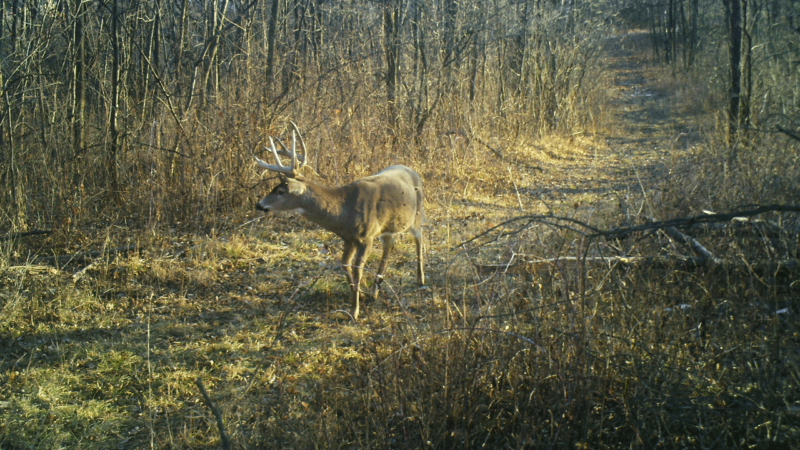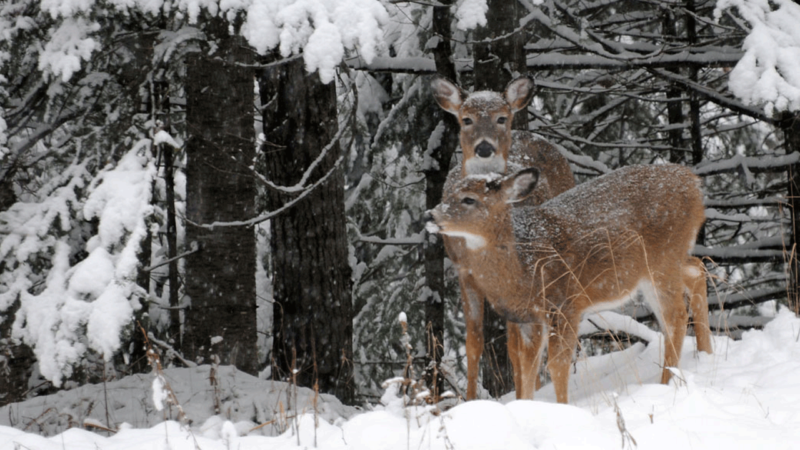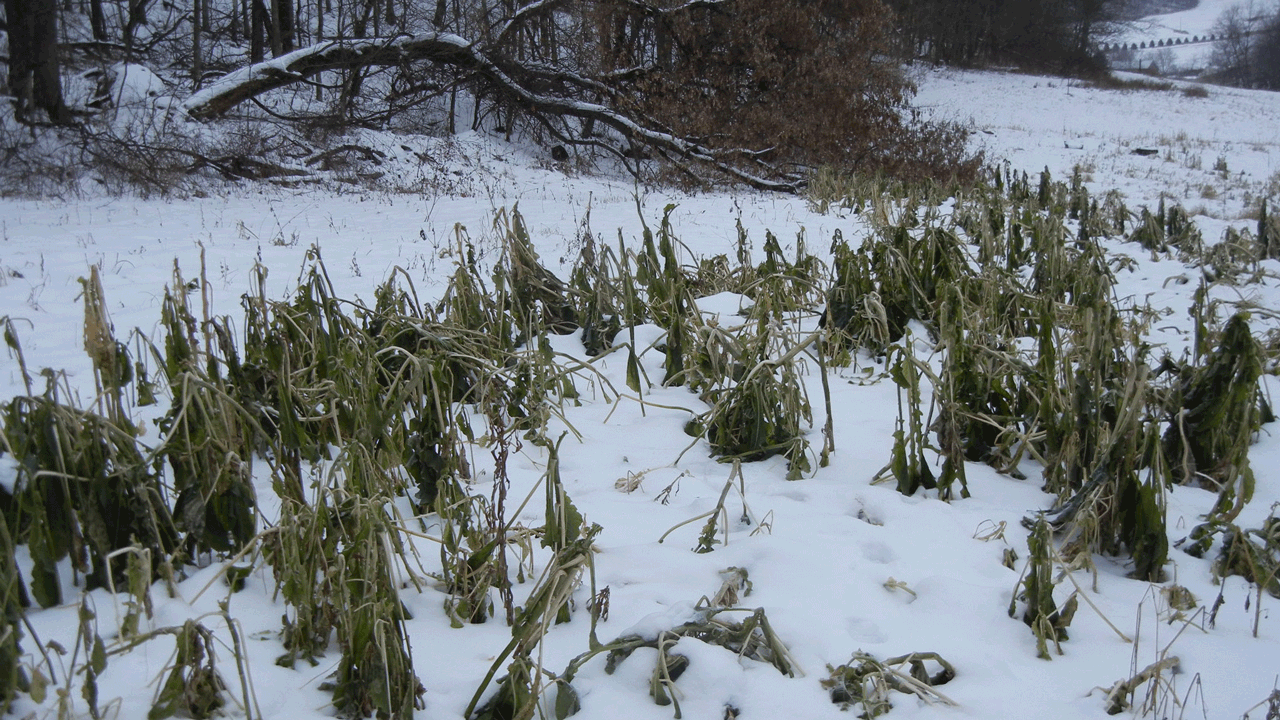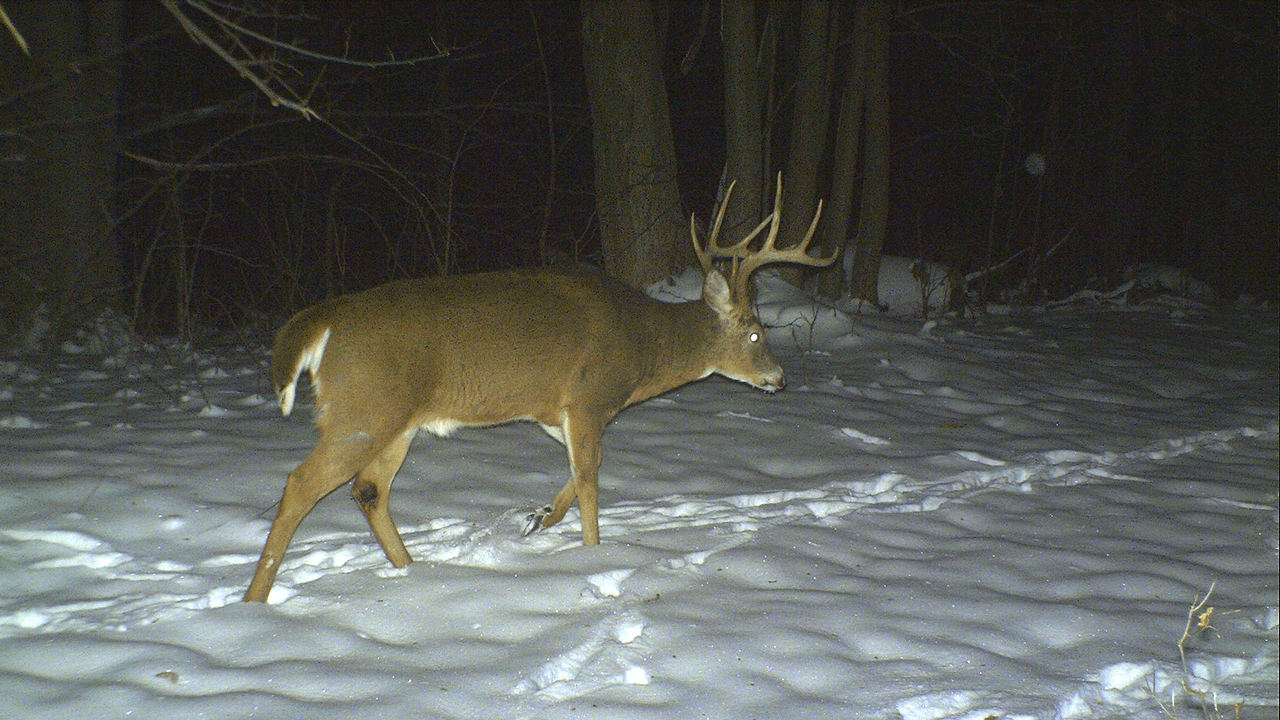LAST UPDATED: December 30th, 2020
In most regions of the U.S. the whitetail rut is now a distant memory. Visions of multiple bucks chasing a hot doe towards your ridge top stand are over. If you still plan to wrap a tag around a buck this season, you better understand the time of year and the buck behavior that corresponds.
For hunting and inventory purposes, knowing where a buck might be and understanding why he is there is critical for developing a late-season hunting strategy. Understanding the nutritional and security needs of a whitetail will consistently help for re-locating bucks during winter.
Finding a Late Season Buck
The early season stud you found on your food plot in September, or monster you saw cruising during the rut, has disappeared and ditched any semblance of daylight movement. Re-locating bucks for late season is really no different than initially finding a buck during summer or early season.
Casting a wide net and setting up multiple trail cameras is the quickest and most reliable strategy for finding daylight buck movement. Logging roads near bedding areas are excellent locations because they typically offer an easy travel route.

With lots of snow on the ground, logging roads become even more valuable as deer gravitate to these easy paths. Using sunshine and terrain to your advantage also works to re-locate bucks. A bedding area facing south is a prime spot to leave a camera for a few weeks. Bright winter sunshine warms these south-facing locations.
Finding limited resources such as recently picked or standing crop fields is probably the most critical part of re-locating a buck. If the field is large, running multiple cameras on time lapse mode or on trails leading to the field is a good option.
When temperatures drop, it is hard to beat a picked cornfield for glassing or capturing trail camera pictures, especially when the field is the only large food source around. This strategy holds true for hunting too. If the situation is setup correctly, mature bucks can become very predictable on a corn or soybean field. Frigid temperatures, and a spook-free setup bode well for late-season success.
Bucks can become careless during single digit temperatures as their need to survive takes precedence. If time allows, glass fields towards dusk and notice where bucks are appearing from and where they are headed during or after their feeding. Multiple day stretches of cold temperatures is the perfect time to catch a mature buck in a 3-5 day pattern on a food source.
Weather most likely dictates the length of a short-term pattern, so act quickly. Access your stand with bedding out of view, and get in early as bucks may be on their feet browsing to the food source well before dark during extreme cold.
Bucks Have Completely Left my Property - What Now?
It’s true, deer are slaves to their stomachs. And if you do not have the food, you are probably not seeing a flurry of late-season deer movement.
Keep in mind, bucks do not always just up and leave like we think they do. On average, deer are not on their feet as much during late season as they are during October and November—but this does not mean they left your property.

Bucks could just be on a strict bed to feed pattern and your cameras are missing all the action. Food is an obvious need of a late-season whitetail. However, so is security cover and ideal bedding locations.
If your property is completely devoid of food, you are not out of luck yet. Although this strategy may not help much in the short term, walking your land and scouting for late season deer beds may be your only prayer for a late season run-in with a buck.
Late-season scouting over the course of a few years can really help you develop a late-season plan without a food source. Sure, bucks may be feeding heavily in the neighbors picked cornfield, but you might be holding the deer during a majority of daylight due to bedding cover.
Find these bedding locations and then discover when they are moving towards food, and how they are moving about your land to get there.

Find Them for Next Year - Taking Inventory
I am no stranger to understanding how busy the Christmas season gets and how difficult it can be to find time for late season hunts. If the holidays have taken up most of your time as your season comes to a close, deploying your trail cams can give you a feel for what may survive until next season and itch the need to get outdoors.
In my opinion, the number one factor contributing to a successful post-season inventory of bucks is the time you allow the camera to sit. Load up a few cameras with lithium batteries and let them soak at a minimum for four weeks.
Lithium batteries perform much better in cold weather and maintain a high charge to produce excellent pictures throughout winter’s frigid temperatures. Just like hunting strategies, late-season inventory should revolve around food, if you have it.
On food sources, I will oftentimes set my camera to video mode during daylight in hopes of spotting bucks moving in the side of the frame, or in the background of the video. I would not recommend nighttime video mode over a food plot or crop field as you will probably get too many videos and run out of battery life faster.

Scrapes are not the hot location they were back in late October, but this does not mean bucks won’t visit them during all months of the year. I currently have a cell camera deployed over a scrape and you wouldn’t believe all the neck stretching buck pictures I am still getting over licking branches into late December.
Whether you leave your trail camera over a scrape, crop field or logging road in the middle of your property, let it be! The longer the better. My trail cameras are never loaded with pictures during the late season or post season, but if I let them go for a long time, I am almost guaranteed to have a few good buck pictures worth waiting for.
Conclusion
Finding late-season bucks can be frustrating without the food sources. It can easily make you feel like you are out of the game. But, staying persistent and understanding survival needs of bucks will keep you close and in the mix when it comes to hunting and relocating late season bucks





